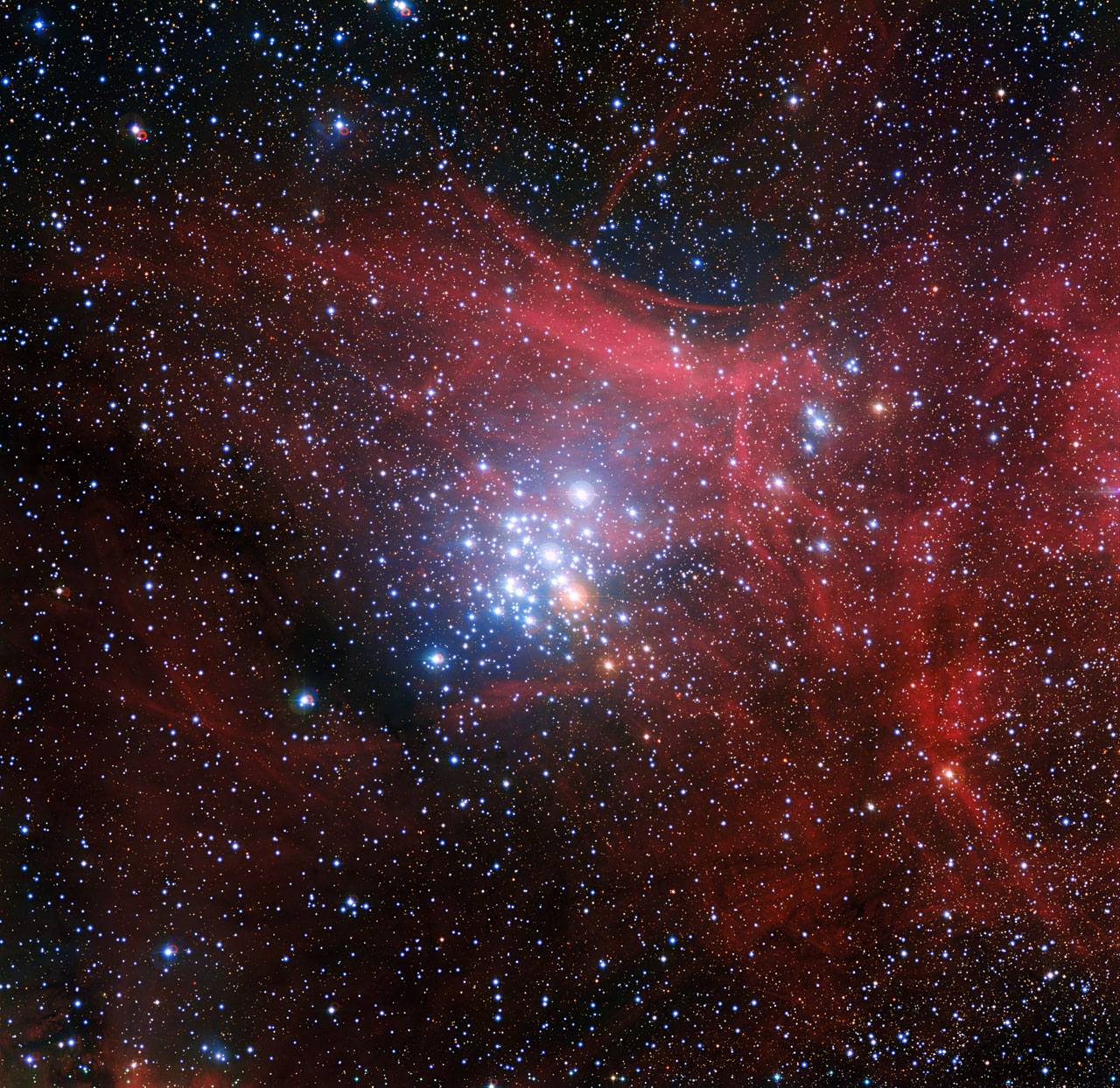Young Star Cluster Shines in Stunning Telescope Views (Video, Photo)

A family of bright young stars group together against a background of glowing clouds in a new photo from an observatory in the Southern Hemisphere.
Located about 8,000 light-years from Earth, many stars of the star cluster NGC 3293 shine in blue with red clouds of gas and dust framing the image released by the European Southern Observatory today (July 23). NGC 3293 would have just been a cloud of dust about 10 million years ago, according to ESO officials. You can fly through the image of the star cluster taken by ESO's La Silla Observatory in Chile in a new video of the star cluster from the astronomy organization.
"Most of the stars seen here are very young, and the cluster itself is less than 10 million years old," ESO officials said in a photo description. "Just babies on cosmic scales if you consider that the sun is 4.6 billion years old and still only middle-aged." [See amazing photos taken by stargazers in July 2014]
Because the approximately 50 stars of the cluster formed at the same time and out of the same cloud of dust, it gives scientists an opportunity to study the evolution of stars with the same chemical composition, ESO officials said.
The fact that the stars of the cluster were probably born at the same time doesn't necessarily mean that all of the stars have the same appearance, however. An orange star at the bottom of the cluster, for example, was probably one of the brightest in the clump when it formed, according to ESO. But the very massive star burned out quickly, becoming a red giant while other stars in the cluster are still in the prime of stellar life.
Star clusters like NGC 3293 are known as open clusters. These kinds of cosmic formations are thought to evolve from a huge cloud of molecular gas, according to ESO.
The stars are held in their spots by gravitational attraction, but if the cluster passes too close to other clusters or clouds, it's possible that attraction will be overcome and stars will separate from the cluster.
Get the Space.com Newsletter
Breaking space news, the latest updates on rocket launches, skywatching events and more!
"Open clusters will only last a few hundred million years, unlike their big cousins, the globular clusters, which can survive for billions of years, and hold on to far more stars," ESO officials said.
The European Southern Observatory is a collaboration of 15 different countries including Brazil, Portugal and the Czech Republic. ESO operates three observing sites in Chile.
Follow Miriam Kramer @mirikramer and Google+. Follow us @Spacedotcom, Facebook and Google+. Original article on Space.com.
Join our Space Forums to keep talking space on the latest missions, night sky and more! And if you have a news tip, correction or comment, let us know at: community@space.com.

Miriam Kramer joined Space.com as a Staff Writer in December 2012. Since then, she has floated in weightlessness on a zero-gravity flight, felt the pull of 4-Gs in a trainer aircraft and watched rockets soar into space from Florida and Virginia. She also served as Space.com's lead space entertainment reporter, and enjoys all aspects of space news, astronomy and commercial spaceflight. Miriam has also presented space stories during live interviews with Fox News and other TV and radio outlets. She originally hails from Knoxville, Tennessee where she and her family would take trips to dark spots on the outskirts of town to watch meteor showers every year. She loves to travel and one day hopes to see the northern lights in person. Miriam is currently a space reporter with Axios, writing the Axios Space newsletter. You can follow Miriam on Twitter.









